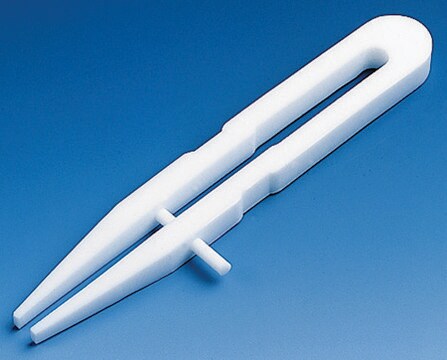일반 설명
We are committed to bringing you greener alternative products, which adhere to one or more of The 12 Principles of Green Chemistry.This antibody is Preservative-free, produced without the harm or sacrifice of animals and exceptionally stable to allow for ambient shipping and storage if needed and thus aligns with "Waste Prevention", "Designing Safer Chemicals" and "Design for Energy Efficiency".
Click here for more information.
ZooMAb® antibodies represent an entirely new generation of recombinant monoclonal antibodies.Each ZooMAb® antibody is manufactured using our proprietary recombinant expression system, purified to homogeneity, and precisely dispensed to produce robust and highly reproducible lot-to-lot consistency. Only top-performing clones are released for use by researchers. Each antibody is validated for high specificity and affinity across multiple applications, including its most commonly used application. ZooMAb® antibodies are reliably available and ready to ship when you need them.
특이성
Clone 3B17 is a ZooMAb® Rabbit recombinant monoclonal antibody that specifically detects Tyrosine-protein phosphatase non-receptor type 11 (SHP2). It targets an epitope within 17 amino acids from the C-terminal region.
면역원
KLH-conjugated linear peptide corresponding to 17 amino acids from the C-terminal region of human Tyrosine-protein phosphatase non-receptor type 11 (SHP2).
애플리케이션
Quality Control Testing
Evaluated by Western Blotting in Human brain tissue lysate.
Western Blotting Analysis: A 1:1,000 dilution of this antibody detected SHP2 in Human brain tissue lysate.
Tested Applications
Western Blotting Analysis: A 1:1,000 dilution from a representative lot detected SHP2 in Rat brain tissue lysate and GST-tagged recombinant fragment of Human SHP2.
Affinity Binding Assay: A representative lot of this antibody bound SHP2 peptide with a KD of 3.9 x 10-6 in an affinity binding assay.
Immunocytochemistry Analysis: A 1:100 dilution from a representative lot detected SHP2 in HEK 293 cells.
Immunohistochemistry (Paraffin) Analysis: A 1:1,000 dilution from a representative lot detected SHP2 in Human heart tissue sections.
Flow Cytometry Analysis: 0.1 μg from a representative lot detected SHP2 in one million MCF-7 cells.
Note: Actual optimal working dilutions must be determined by end user as specimens, and experimental conditions may vary with the end user.
표적 설명
Tyrosine-protein phosphatase non-receptor type 11 (UniProt: Q06124; also known as EC:3.1.3.48, Protein-tyrosine phosphatase 1D, PTP-1D, Protein-tyrosine phosphatase 2C, PTP-2C, SH-PTP2, SHP-2, Shp2, SH-PTP3) is encoded by the PTPN11 (also known as PTP2C, SHPTP2) gene (Gene ID: 5781) in human. SHP-2 is widely expressed, cytoplasmic SH2 domain containing protein tyrosine phosphatase that is involved in signaling of various growth factors and cytokines. It acts downstream of various receptor and cytoplasmic protein tyrosine kinases to participate in signaling from cell surface to the nucleus. It plays a regulatory role in various signaling events that are important in mitogenic activation, metabolic control, transcription regulation, and cell migration. Its protein tyrosine phosphatase domain is localized in amino acids 247-517. It has two tandem SH2 domains (aa 6-106 and 112-206) that repress its phosphatase activity. Binding of these domains to phosphotyrosine-containing proteins relieves this auto-inhibition by inducing a conformational change in the enzyme. SHP-2 is reported to be phosphorylated and inhibited by p44 MAPK. SHP-2 is shown to dephosphorylate ROCK2 at tyrosine 722 in the coiled-coil domain that results in stimulation of its RhoA binding activity. Three isoforms of SHP-2 have been described that are produced by alternative splicing. This ZooMAb® recombinant monoclonal antibody, generated by our propriety technology, offers significantly enhanced specificity, affinity, reproducibility, and stability over conventional monoclonals. (Ref.: Lee, HH., and Chang, ZF. (2008). J. Cell Biol. 181(6); 999-1012; Qu, CK. (2000). Cell Research. 10(4); 279-288; Peraldi, P., et al. (1994). Proc. Natl. Acad. Sci. USA. 91(11); 5002-5006).
물리적 형태
Purified recombinant rabbit monoclonal antibody IgG, lyophilized in PBS with 5% Trehalose, normal appearance a coarse or translucent resin. The PBS/trehalose components in the ZooMAb formulation can have the appearance of a semi-solid (bead like gel) after lyophilization. This is a normal phenomenon. Please follow the recommended reconstitution procedure in the data sheet to dissolve the semi-solid, bead-like, gel-appearing material. The resulting antibody solution is completely stable and functional as proven by full functional testing. Contains no biocide or preservatives, such as azide, or any animal by-products. Larger pack sizes provided as multiples of 25 μL.
재구성
300 μg/mL after reconstitution at 25 μL per vial. Please refer to guidance on suggested starting dilutions and/or titers per application and sample type.
저장 및 안정성
Recommend storage of lyophilized product at 2-8°C; Before reconstitution, micro-centrifuge vials briefly to spin down material to bottom of the vial; Reconstitute each vial by adding 25 μL of filtered lab grade water or PBS; Reconstituted antibodies can be stored at 2-8°C, or -20°C for long term storage. Avoid repeated freeze-thaws.
법적 정보
ZooMAb is a registered trademark of Merck KGaA, Darmstadt, Germany
면책조항
Unless otherwise stated in our catalog or other company documentation accompanying the product(s), our products are intended for research use only and are not to be used for any other purpose, which includes but is not limited to, unauthorized commercial uses, in vitro diagnostic uses, ex vivo or in vivo therapeutic uses or any type of consumption or application to humans or animals.

